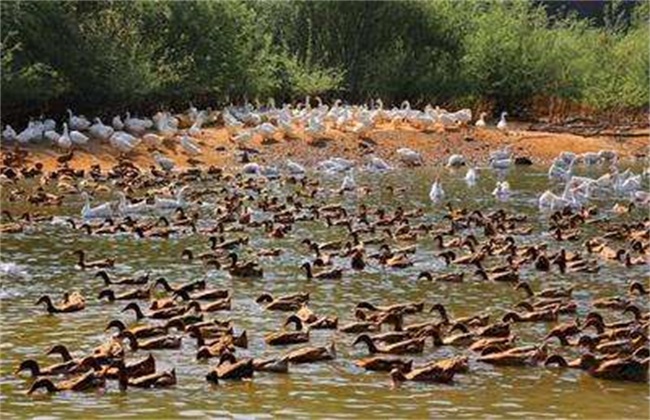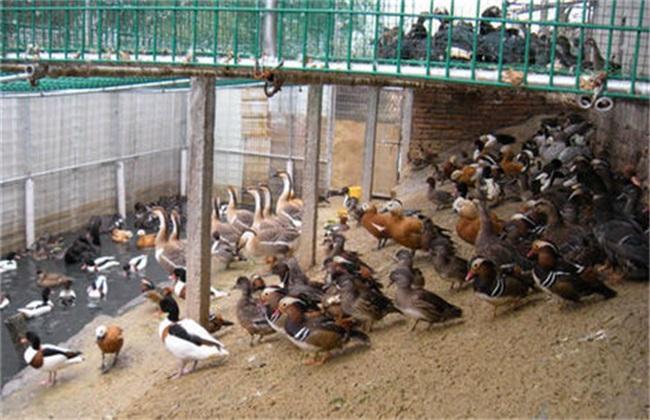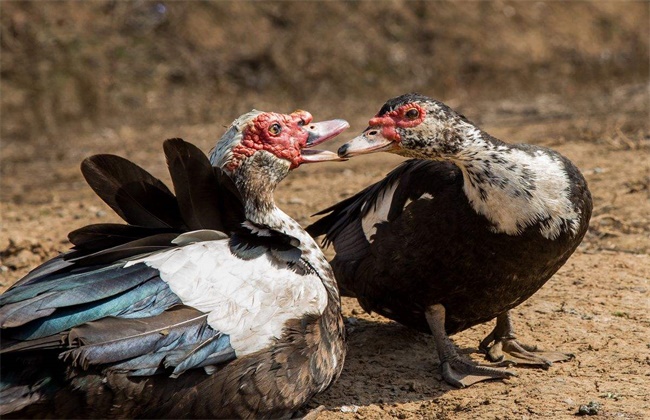Culture and Management Technology of Jinding Duck
Jinding duck is a kind of sesame duck, also known as South China duck, which is an improved breed of traditional poultry in Fujian. It has the characteristics of strong physique, strong foraging ability, large egg production, heat resistance and cold resistance, and high feed conversion rate. Breeding it needs to pay attention to daily feeding and management, so how to raise Jinding duck? Let's get to know it.

1. Raising ducklings
Ducklings refer to ducklings who are just out of shell to 20 days old, ducklings are afraid of cold and heat, so it is necessary to control the temperature between 30 and 32 degrees for fresh out of the shell, and gradually decrease the temperature with the growth of ducklings. Give it a large amount of water within 24 hours after it comes out of the shell, and then start eating, which is conducive to the elimination of dirt accumulated in the digestive tract during the embryonic period. Feeding is to adapt to its rapid growth and development of nutritional needs, should be fed with full-price feed, feeding is to take a small amount of frequent feeding method. Put it in shallow water 3-4 days after coming out of the shell to promote digestion and metabolism, and keep the ducklings clean, but should not be put in the water for too long, but also pay attention to the change of water temperature.
2. Feeding during the breeding period
The breeding period generally refers to the 20-40-year-old ducks, when the ducks are lively and active, and their grazing time can be gradually extended with the increase of age, and feeding can also be flexibly mastered according to the foraging situation, and the ducks are mainly full. With the increase of age, the individuals of ducks increase, the feed consumption increases, and the roughage tolerance increases. In order to reduce feed cost, protein feed can be reduced appropriately. At this time, it is also necessary to raise ducks in groups. For ducks with slow growth, we can separate them, strengthen feeding management, promote their growth and development, and ensure that they are consistent with the growth of ducks.
3. Raising young ducks
Young ducks refer to 41-day-old ducks only before they start production, also known as backup ducks. at this stage, ducks are relatively easy to raise, strong physique, strong foraging ability, strong adaptability to climate, rapid growth and development, so breeding should be in accordance with local conditions. make full use of outdoor grazing to reduce feed supplement and reduce feed costs. In the case that ducks can not have enough to eat when grazing, the henhouse should supplement full-price feed to ensure the nutritional needs of his growth and development, lay a solid foundation for laying eggs, and urge them to lay eggs as soon as possible.
4. Adult duck rearing
Adult ducks already have the ability to lay eggs, so it is necessary to ensure an adequate supply of feed, especially protein feed, for a long-term and stable supply, and must not switch feed at will. If the feed needs to be changed, it should be carried out step by step, and if there is a decline in egg production or other abnormal phenomena in this process, the management should be strengthened or the replacement should be stopped in time. Reduce the noise during the laying period, so as not to frighten the ducks and reduce the egg production, and keep the environment inside and outside the duck house clean and clean.
The above is the introduction of Jinding duck breeding management technology, hope to help you, want to know more related knowledge, please pay attention to us.
Related
- On the eggshell is a badge full of pride. British Poultry Egg Market and Consumer observation
- British study: 72% of Britons are willing to buy native eggs raised by insects
- Guidelines for friendly egg production revised the increase of space in chicken sheds can not be forced to change feathers and lay eggs.
- Risk of delay in customs clearance Australia suspends lobster exports to China
- Pig semen-the Vector of virus Transmission (4)
- Pig semen-the Vector of virus Transmission (3)
- Five common causes of difficult control of classical swine fever in clinic and their countermeasures
- Foot-and-mouth disease is the most effective way to prevent it!
- PED is the number one killer of piglets and has to be guarded against in autumn and winter.
- What is "yellow fat pig"? Have you ever heard the pig collector talk about "yellow fat pig"?



